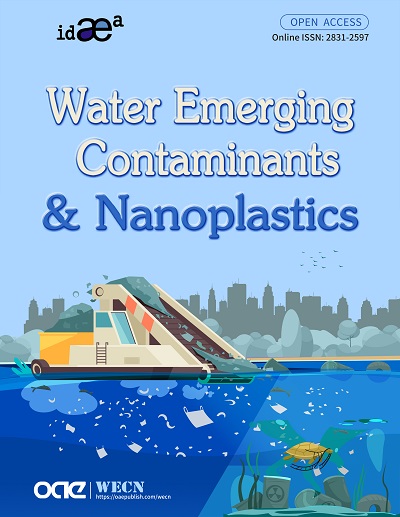
Topic: New Advances in Green Adsorbents for Wastewater Treatment
A Special Issue of Water Emerging Contaminants & Nanoplastics
ISSN 2831-2597 (Online)
Submission deadline: 31 Dec 2024
Guest Editor(s)
Prof. Dr. Kuok Ho Daniel Tang
Department of Environmental Science, The University of Arizona, Tucson, AZ 85721, USA.
Prof. Dr. Yanju Liu
Global Center for Environmental Remediation, College of Engineering, Science and Environment, University of Newcastle, Callaghan, Australia.
Special Issue Introduction
Emerging contaminants continue to be identified with the advancement of technologies. These contaminants include micropollutants, endocrine disruptors (EDs), pesticides, pharmaceuticals, hormones, microplastics, per- and polyfluorinated alkyl substances (PFAS), toxins, as well as a wide range of synthetic dyes and dye-containing hazardous pollutants. Their removal from wastewater is crucial to ensure minimized and manageable risks to human health and the environment.
Sorption technology, as a conventional and continuously evolving technology, has promising benefits for the removal of emerging contaminants from wastewater. It typically involves the trapping of liquid, gaseous, or aqueous contaminants by a solid phase or the boundary of two phases. Significant advances have been made in the development of adsorbents and the related technologies, encompassing novel sorbent materials (e.g., polymer-based), tailored sorbents, composite sorbents, regeneration techniques, and the use of computer modeling in the design of sorbent materials. The development of "green adsorbents" that incorporate environmentally friendly properties is also garnering attention. These green adsorbents typically use renewable materials and green synthesis processes and are recyclable and environmentally friendly (minimized toxicity and risks). Additionally, they are cost-effective and selective in actions. Continuous research in this area would further enhance the practical use and commercialization of these novel sorbent materials.
This Special Issue focuses on the development and advances in green adsorbents that are used in the removal of emerging contaminants from water. It covers aspects related to their syntheses, applications, current challenges, and prospects. Original research reports, review articles, communications, and perspectives related to green sorbent materials and their applications for removing emerging contaminants are welcomed. This Special Issue also considers topics related to the applications of green adsorbents in conventional wastewater treatment, the design of new wastewater treatment processes that integrate green adsorbents, eco-friendly disposal and regeneration of green adsorbents, life cycle assessment of green adsorbents, the application of machine learning in optimizing adsorption processes involving green adsorbents, and techno-economic analysis of green adsorbents.
Sorption technology, as a conventional and continuously evolving technology, has promising benefits for the removal of emerging contaminants from wastewater. It typically involves the trapping of liquid, gaseous, or aqueous contaminants by a solid phase or the boundary of two phases. Significant advances have been made in the development of adsorbents and the related technologies, encompassing novel sorbent materials (e.g., polymer-based), tailored sorbents, composite sorbents, regeneration techniques, and the use of computer modeling in the design of sorbent materials. The development of "green adsorbents" that incorporate environmentally friendly properties is also garnering attention. These green adsorbents typically use renewable materials and green synthesis processes and are recyclable and environmentally friendly (minimized toxicity and risks). Additionally, they are cost-effective and selective in actions. Continuous research in this area would further enhance the practical use and commercialization of these novel sorbent materials.
This Special Issue focuses on the development and advances in green adsorbents that are used in the removal of emerging contaminants from water. It covers aspects related to their syntheses, applications, current challenges, and prospects. Original research reports, review articles, communications, and perspectives related to green sorbent materials and their applications for removing emerging contaminants are welcomed. This Special Issue also considers topics related to the applications of green adsorbents in conventional wastewater treatment, the design of new wastewater treatment processes that integrate green adsorbents, eco-friendly disposal and regeneration of green adsorbents, life cycle assessment of green adsorbents, the application of machine learning in optimizing adsorption processes involving green adsorbents, and techno-economic analysis of green adsorbents.
Keywords
Green adsorbents, green synthesis, cost-effective, emerging pollutants, regeneration, selectivity, renewable
Submission Deadline
31 Dec 2024
Submission Information
Ten articles in the Special Issue are exempt from article processing charges.
For Author Instructions, please refer to https://www.oaepublish.com/wecn/author_instructions
For Online Submission, please login at https://oaemesas.com/login?JournalId=wecn&SpecialIssueId=WECN240415
Contacts: Stevan Wang, Assistant Editor, stevan.wang@oaeservice.com







